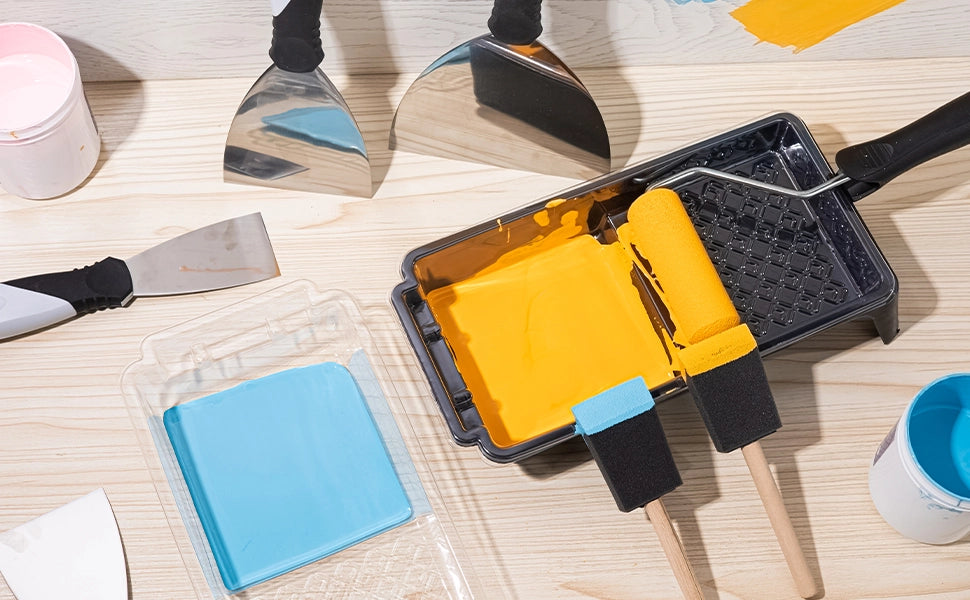Revamping old furniture can breathe new life into your home, and for DIY enthusiasts across the U.S., the right paint brush is the key to a flawless finish. This guide unveils the secrets of different brush heads, helping you choose the perfect one for various surfaces and master fine painting techniques. Whether you're updating a wooden chair or a metal table, these tips will elevate your furniture painting game.
Understanding Paint Brush Types
Paint brushes come in various shapes and bristle materials, each suited to specific tasks.
-
Flat Brushes: Wide and rectangular, ideal for large, flat surfaces like table tops or cabinet doors. Available in 1-4 inch widths.
-
Angled Brushes: Tapered edges (typically 1-2 inches) excel at cutting in edges, trim, and detailed work on chair legs or frames.
-
Round Brushes: Small and pointed, perfect for intricate carvings or small furniture pieces like drawer pulls.
-
Bristle Materials:
-
Synthetic (Nylon/Polyester): Best for water-based paints (latex, acrylic), durable, and easy to clean.
-
Natural (Boar/China): Suited for oil-based paints, offering a smooth finish but requiring more care.
-
Choosing the Right Brush for Different Surfaces
Matching the brush to your furniture’s material ensures a professional result.
-
Wood: Use a 2-inch flat synthetic brush for smooth wood surfaces (e.g., dressers) or an angled brush for textured grain (e.g., oak tables). Sand first for better adhesion.
-
Metal: Opt for a 1-inch angled synthetic brush to navigate curves and edges (e.g., metal stools). Prime with rust-inhibiting primer for durability.
-
Upholstered or Mixed Media: A small round brush works for touching up wooden arms on a fabric chair, avoiding fabric soak-through.
-
Glossy Finishes: Use a high-quality synthetic brush with flagged (split) tips to minimize brush marks on lacquered surfaces.
-
Pro Tip: Test your brush on a scrap piece to match the paint type and surface texture.
Fine Painting Techniques for a Flawless Look
Master these methods to achieve a smooth, professional finish.
-
Loading the Brush: Dip only the bottom third of the bristles into paint, tapping gently against the can or tray to remove excess. Avoid overloading to prevent drips.
-
Stroke Technique: Apply paint with long, even strokes in one direction. For flat surfaces, use a “cross-hatch” method (horizontal then vertical) and smooth out with a final light stroke.
-
Edge Control: Use the angled brush’s tip to feather edges, blending into rolled areas for a seamless transition. Work quickly to maintain a wet edge.
-
Layering: Apply thin coats, allowing 2-4 hours of drying time between layers (check paint label). Two to three coats typically suffice for full coverage.
-
Detail Work: For carvings or molding, use a round brush with short, controlled dabs, filling crevices without pooling.
Common Mistakes to Avoid
-
Wrong Bristle Choice: Using natural bristles with water-based paint can cause clumping; stick to synthetic for latex.
-
Overbrushing: Going over the same spot too many times leaves marks. Apply and move on.
-
Skipping Prep: Painting over dirt or gloss without sanding leads to peeling. Clean and lightly sand all surfaces.
-
Rushing Cleanup: Letting paint dry on bristles ruins the brush. Clean immediately with water (water-based) or mineral spirits (oil-based).
Tool Care and Maintenance
Preserve your brushes for future projects with these steps:
-
Cleaning: Rinse under warm water or use solvent, working paint out with a brush comb. Reshape bristles and hang to dry.
-
Storage: Store in a dry place, wrapped in paper or a brush holder to maintain shape. Avoid standing on bristles.
-
Long-Term Care: Soak in a fabric softener solution (1:4 with water) after cleaning to keep bristles soft and flexible.
Real User Experiences
-
“My angled brush made painting my dresser edges a breeze—no more uneven lines!” – Rachel, New York DIYer.
-
“Switching to a synthetic brush for my latex paint saved me from a sticky mess!” – Paul, California renovator.
Tools to Get Started
-
Angled Brush: 2-inch synthetic for versatility.
-
Flat Brush: 2-3 inch for large surfaces.
-
Round Brush: 1-inch for details.
-
Extras: Paint tray, drop cloths, sandpaper.
Final Thoughts
Unlock the potential of your furniture with the right paint brush and technique. From choosing the perfect bristle to mastering fine strokes, this guide empowers you to create a stunning new look. Grab your brushes and start your furniture makeover today!
Keywords: paint brush guide, furniture painting ideas, DIY furniture refresh, home decor tips




0 comments